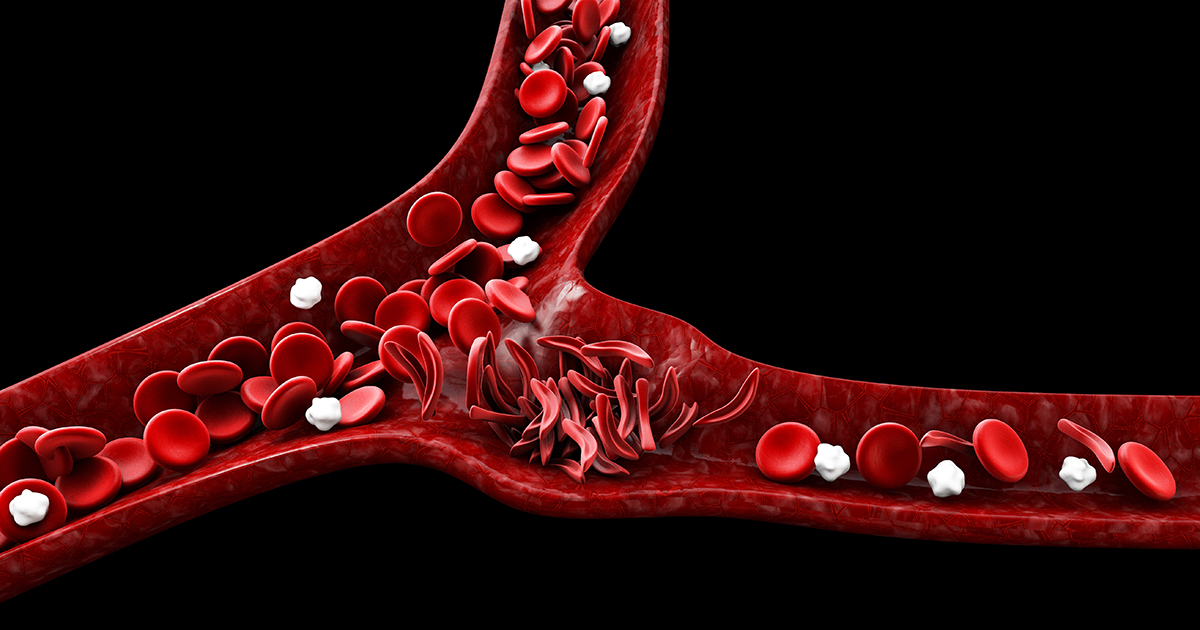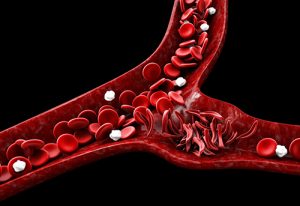
Helping kids with sickle cell disease live their healthiest lives
Affecting nearly 100,000 Americans*, sickle cell disease (SCD) is an inherited, lifelong red blood cell disorder. Normal red blood cells are round and flow easily through blood vessels, carrying oxygen throughout the body. Someone with SCD produces an abnormal type of hemoglobin in the cells, which causes the red blood cells to take on a sickle or banana-like shape. Because of their odd shape, the sickled red blood cells can get stuck in smaller blood vessels, causing them to clog.
Understanding SCD
 Nicole Alwan, a research associate at the University of Illinois College of Medicine at Peoria, studies blood disorders, including SCD, and she helps us understand the disease below.
Nicole Alwan, a research associate at the University of Illinois College of Medicine at Peoria, studies blood disorders, including SCD, and she helps us understand the disease below.
What is the cause?
A baby inherits two abnormal hemoglobin genes – one from each parent. In the United States, there is a federal Newborn Screening Program where all newborns are tested for several inherited diseases, including SCD, prior to leaving the hospital. If testing shows probable SCD, the patient is seen by a pediatric hematologist at 2 to 4 months of age. Then, they will have a confirmatory blood test done, and the baby’s caregivers can be educated about SCD.
Who does it affect?
It typically affects people of African descent. However, there are some people of Hispanic, Middle Eastern and Asian descent who have different variants of the blood disorder, too.
What are the symptoms?
The typical symptoms include chronic pain, fever, infection, acute chest syndrome, swelling of the hands and feet, yellowing of the eyes and stroke.
What are the treatments?
There are two categories of treatment – one is to try and prevent or decrease symptoms of SCD. The second is to treat the specific symptoms of SCD once they occur.
To prevent or decrease symptoms, children are often given antibiotics twice-a-day by mouth until they are 5 years old. They are also given some special immunizations. There is also an FDA-approved medication to treat SCD called Hydroxyurea. Hydroxyurea can be given to patients as young as 9 months of age to help protect their organs. There are also a number of other new medications being studied that may help those with SCD.
To treat specific symptoms of SCD, a doctor can prescribe pain medication, an antibiotic for infections, blood transfusions or other treatments.
Caring for pediatric patients with SCD
OSF HealthCare Children’s Hospital of Illinois provides diagnosis, treatment, education and preventive care for children with SCD within the division of hematology and oncology – located in the Jim and Trudy Maloof St. Jude Affiliate Clinic.
“Our clinic has a medical team specifically trained to treat sickle cell patients, including a doctor, nurse, nurse practitioner, social worker, counselor and educational specialist,” Alwan said.
The SCD clinic cares for children and teenagers. Because the SCD clinic is located within OSF Children’s Hospital, the patient has access to 140 other specialists at the hospital. Since SCD can often affect internal organs, this is an advantage for the patients and their families.
Connecting families
OSF Children’s Hospital hosted the inaugural Sickle Cell-ebrate Wellness event on October 19, 2017, at Jump Simulation & Education Center for both pediatric and adult SCD patients and their families.
The event included several educational booths discussing topics related to SCD like nutrition, treatments, new research and social work resources. A representative of the Sickle Cell Disease Association of America was also there, helping enroll on their Get Connected Sickle Cell Patient Registry.
“The event was a huge success,” Alwan said. “We had over 100 attendees, and their feedback was positive. It was a great way for families to connect. We want to make this an annual event.”
Attendees with SCD were given the option to receive a flu shot. Dinner, a variety of door prizes, giveaways, crafts and a special drawing for SCD patients were also included.
*According to the Centers for Disease Control and Prevention.